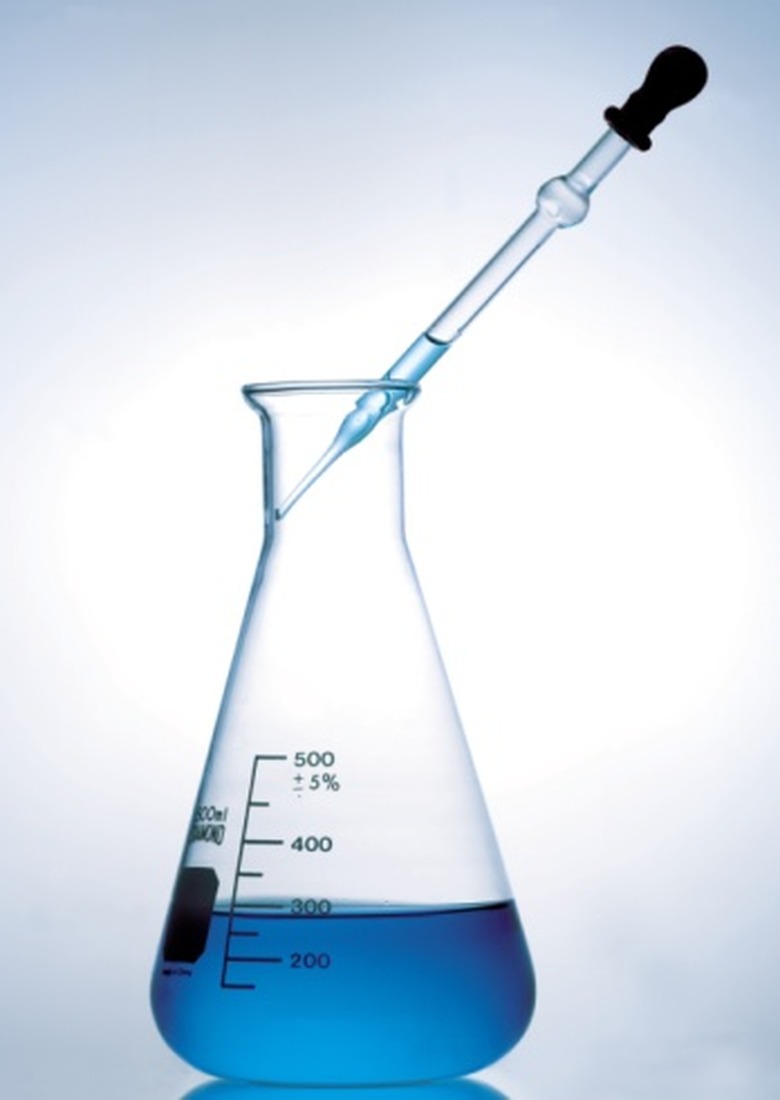How To Write A Observation Science Report
As a student in any of the sciences, there may come a time when your instructor will ask you to write an observation paper about an experiment you have completed. An observation paper should define the question for which you desire an answer; a hypothesis of what you believe the outcome of the experiment is; materials and equipment used in the experiment; data obtained during the experiment, and final conclusions that help to support your initial hypothesis. The report should be as short as possible while communicating your discoveries to others.
Step 1
Enter the title of your observation report at the top of a clean sheet of notebook paper. If the observation report deals with what Isopropyl alcohol does to amoeba, the title might be, "Effects of Isopropyl Alcohol on Amoeba."
Step 2
Enter a sub-heading under the title of the report and label it "Hypothesis." Directly under this sub-heading, enter the details of what your hypothesis entails. In the case of the effects of isopropyl alcohol on amoeba: "I hypothesize that microorganisms in the amoeba family will behave erratically after exposure to Isopropyl alcohol, but that the microorganisms will recover from the ordeal and return to a normal reproduction stage about 24 hours after the alcohol has evaporated."
Step 3
Write a new sub-heading labeled "Equipment and Materials Used" under the hypothesis section and state the equipment and materials that were used to test your hypothesis. To expose amoeba to alcohol in the example experiment, and to observe the effects, materials could include a microscope at 200x magnification; microscope slide with confirmed live amoeba; medicine dropper and isopropyl alcohol.
Step 4
Write a third sub-heading labeled "Environmental Details" under which you record the setting in which your actual experiment takes place. Place the date the experiment is performed under this section, as well as the start and end times of the experiment. Take a temperature reading of the laboratory at the beginning and at the end of the observation phase, then write the temperature under this section also.
Step 5
Create a fourth sub-heading labeled "Procedure" under which you make brief annotations as the experiment progresses. As an example: "At noon, I placed the slide containing live amoeba under the microscope for observation. I counted a total of 150 live amoeba at the beginning of this experiment", or "At 1 p.m. I placed one drop of isopropyl alcohol onto the live amoeba. Since the amoeba were suspended in 4 drops of water initially, the amount of alcohol added was therefore in the radio of 1:4," "Observed the amoeba at 6 p.m. and noted that the isopropyl alcohol slowed the amoeba, and 30 of them ceased all activity", "Observed the amoeba at 8 p.m. and found no activity from any of the amoeba," "Observed the amoeba at noon on day two and all of the amoeba had ceased all biological funcions."
Step 6
Write a fifth sub-heading labeled "Results" and write a brief expose of what the results of the experiment were. In this case, after 24 hours all of the amoeba had died from an exposure of isopropyl alcohol in the ratio of 25 percent alcohol to 75 percent clean water solution. The amoeba had died as a result of the experiment.
Step 7
Write a sixth and final sub-heading labeled "Summary" and enter support or lack of support the experiment provided for your hypothesis. In the case of this example experiment: "A 1:4 radio of isopropyl alcohol to clean water solution caused death of all amoeba and my hypothesis was found to be unsupported through the procedure of this experiment. Isopropyl alcohol is found to be deadly to amoeba rather than increasing their motility with subsequent recovery to normalcy after the prescribed time."
Things Needed
- Necessary tools and materials to perform your experiment (microscope, chemicals, heat, refrigerators, test tubes)
- Notebook and pen or pencil
TL;DR (Too Long; Didn't Read)
Never feel bad if your hypothesis is found as unsupported through your actual experimentation procedure. An observation paper is used as a reference by yourself and others when conducting future experiments, such as lowering the amount of isopropyl alcohol to find out what percentage amoeba can tolerate, as just one example.
Cite This Article
MLA
Schanaman, Kurt. "How To Write A Observation Science Report" sciencing.com, https://www.sciencing.com/write-observation-science-report-8657388/. 24 April 2017.
APA
Schanaman, Kurt. (2017, April 24). How To Write A Observation Science Report. sciencing.com. Retrieved from https://www.sciencing.com/write-observation-science-report-8657388/
Chicago
Schanaman, Kurt. How To Write A Observation Science Report last modified August 30, 2022. https://www.sciencing.com/write-observation-science-report-8657388/
